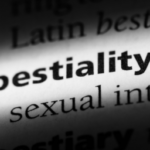NSW Police Officer Faces Charges of Possessing Bestiality and Child Abuse Material

A police officer has been charged with misconduct in public office, unauthorised access to restricted data, possessing bestiality material and possessing child abuse material after an investigation by the Professional Standards Command of the New South Wales Police Force.
The 38-year old senior constable attached to Hornsby Police Station was arrested just after 9am on 15 July 2025 as a result of Strike Force Blumont’s investigation into reports of unauthorised access to the police computer system – which holds images relating to cases being prosecuted, including images of bestiality and child abuse material.
The officer’s electronic devices were seized and he has been suspended on full pay. Police say that a review of the officer’s employment status is currently underway.
The identity of the officer has not been released.
The offence of child abuse material in New South Wales
Disseminating, possessing or producing child abuse material is an offence under section 91H of the Crimes Act 1900 (NSW) which carries a maximum penalty of 10 years in prison.
To establish the offence, the prosecution must prove beyond reasonable doubt that:
- You possessed, disseminated or produced material, and
- The material was child abuse material.
‘Possession’ includes physical custody or control of material or data
‘Dissemination’ includes:
- sending, supplying, exhibiting, transmitting or communicating to another
- making available for access by another, and
- entering an agreement or arrangement to do so
‘Production’ includes:
- filming, photographing, printing or otherwise making
- altering or manipulating, and
- entering an agreement or arrangement to do so
What is child abuse material?
Section 91FB of the Crimes Act 1900 (NSW) defines “child abuse material” as material that depicts or describes, in a way that reasonable person would regard as being, in all the circumstances, offensive, such as:
- A person who is, appears to be or is implied to be, a child as a victim of torture, cruelty or physical abuse
- A person who is, appears to be or is implied to be, a child engaged in or apparently engaged in a sexual pose or sexual activity (whether or not in the presence of other persons)
- A person who is, appears to be or is implied to be, a child in the presence of another person who is engaged or apparently engaged in a sexual pose or sexual activity, or
- The private parts of a person who is, appears to be or is implied to be, a child.
In determining whether reasonable persons would regard particular material as being, in all the circumstances, offensive, the following factors are taken into account:
- The standards of morality, decency and propriety generally accepted by reasonable adults
- The literary, artistic or educational merit (if any) of the material, and
- The journalistic merit (if any) of the material, being the merit of the material as a record or report of a matter of public interest
- The general character of the material (including whether it is of a medical, legal or scientific character)
Private parts are a person’s genital area or anal area, or the breasts of a female person.
A ‘child’ is a person under the age of 16 years.
Defences to child abuse material offences
Defences to the charge of disseminating, possessing or producing child abuse material include that:
- You did not know, and could not reasonable have known, that you possessed, disseminated or produced it,
- Your conduct benefited the public through law enforcement or administration, or the administration of justice, and did not extend beyond it,
- The material received a classification for publication,
- The use of the material was approved by the Attorney-General for research, or
- The material depicts you and would not be child abuse material in the absence of your image.
An additional defence is where you received the material unsolicited and took reasonable steps to get rid of it upon becoming aware of its nature.
Legal exception
A legal exception to child abuse material charges is that:
- The possession of the material occurred when you were under 18, and
- A reasonable person would consider the possession acceptable considering:
- The nature and content of the material,
- The circumstances whereby you came to possess it,
- The age, vulnerability and circumstances of the child depicted,
- Your age, vulnerability and circumstances, and
- The relationship between you and the child depicted.
Child abuse material charges cover: Filming, photographing, printing or otherwise making child abuse material, or altering or manipulating any image for the purpose of making child abuse material, or initiating or entering into any agreement or arrangement to do so.
The offence of bestiality or animal crush material in New South Wales
Section 547E of the Crimes Act 1900 (NSW) makes it an offence to possess, produce or disseminate bestiality or animal crush material.
“Bestiality or animal crush material” is defined as material that:
- Depicts or describes bestiality or an animal being crushed, burned, drowned, suffocated, impaled or otherwise killed or subjected to serious injury; and
- Is material that a reasonable person would regard in all the circumstances as being intended or apparently intended to excite or gratify a sexual interest or excite or gratify a sadistic or other perverted interest in violence or cruelty.
“Animal” under the Act is limited to a mammal, a bird or a reptile and does not include insects, spiders or worms.
Section 547E(1) of the Act states that a person who produces or disseminates bestiality or animal crush material commits an offence which carries a maximum penalty of 5 years imprisonment.
A person will “produce” material if they:
- Film, photograph, print or otherwise make bestiality or animal crush material, or
- Alter or manipulate an image for the purpose of making bestiality or animal crush material, or
- Enter into an agreement or arrangement to do so.
A person will “disseminate” material if they:
- Send, supply, exhibit, transmit or communicate the material to another person, or
- Make the material available for access by another person, or
- Enter into an agreement or arrangement to do so.
Section 547E(2) of the Act also outlines an offence for the possession of bestiality or animal crush material, which carries a maximum penalty of 3 years imprisonment. Possession includes accessing material online.
Legal defences
There are a number of defences are outlined in the Act, including circumstances where:
- The defendant did not know, and could not reasonably be expected to have known, that the material the defendant produced, disseminated or possessed was bestiality or animal crush material;
- The defendant was, at the time of the offence, a law enforcement officer acting in the course of the defendant’s duties and the conduct of the defendant was reasonable in the circumstances for the purpose of performing the duty;
- The material concerned was classified, whether before or after the commission of the alleged offence, under the Classification (Publications, Films and Computer Games) Act 1995 of the Commonwealth, other than as refused classification (RC).
- The conduct engaged in by the defendant was necessary for or of assistance in conducting scientific, medical or educational research approved, authorised or otherwise permitted under a law of the State or of another State, a Territory or the Commonwealth,
- For an offence involving possession of bestiality or animal crush material, but without limiting the defences above–the material came into the defendant’s possession unsolicited and the defendant, as soon as the defendant became aware of its nature, took reasonable steps to get rid of it.
- The conduct was otherwise engaged for the “public benefit” including for purpose of enforcing, administering or monitoring compliance with the law or the administration of justice.
Going to court?
If you have been accused of a criminal offence, call Sydney Criminal Lawyers on (02) 9261 8881 for accurate advice and formidable legal representation.
Your first conference is free and without obligation.






